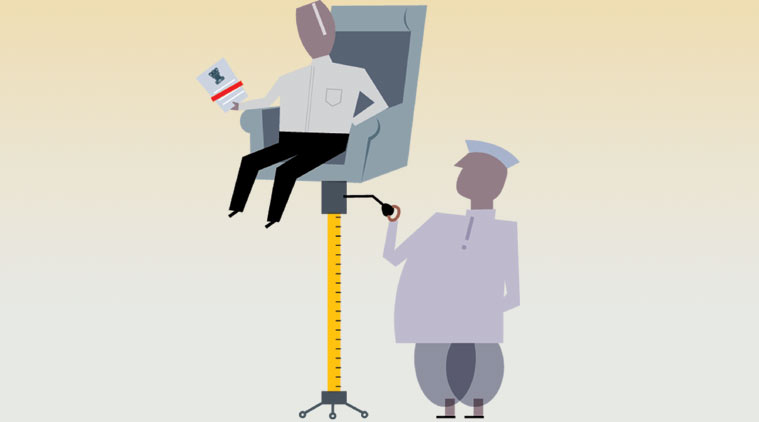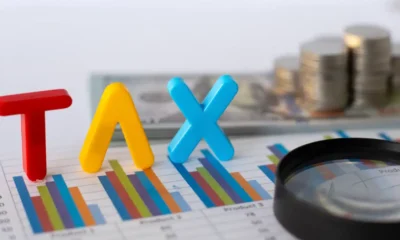Trends
8th Pay Commission. A Boon For The Few And A Burden For The Many.
Published
1 month agoon

Prime Minister Narendra Modi recently approved the establishment of the 8th Pay Commission, which will revise the salaries and pensions of central government employees and pensioners starting in January 2026. While the move promises financial relief for millions of government employees, it has also sparked significant concerns about fiscal sustainability, economic disparity, and systemic governance challenges.
What is the Eighth Pay Commission?
Pay commissions are typically set up every decade to revise the salaries, pensions, and allowances of central government employees. The last revision under the Seventh Pay Commission, effective from January 2016, saw a significant salary hike with a fitment factor of 2.57. This increased the minimum basic pay from ₹7,000 to ₹18,000 per month. The Eighth Pay Commission is expected to raise this further, with projections indicating a fitment factor of 2.86, potentially increasing the minimum basic pay to ₹25,000–₹26,000. It is believed that the increase in minimum basic pay will be an astonishing 186%. This may take the minimum basic pay to INR 51,480 per month
Fiscal Impact and Inflationary Pressures
The enhanced wages, while supporting private consumption, could significantly strain the government’s fiscal health. Economists warn that the salary hikes may stoke inflation, necessitating tighter fiscal control beyond FY26. India’s fiscal deficit target of 4.5% of GDP by 2025-26 could face challenges, with higher wage bills impacting critical public investments in infrastructure, education, and healthcare.
Beyond government employees, the debate also touches on the privileges enjoyed by politicians. From multiple pensions to generous allowances, these benefits contrast sharply with the financial struggles of ordinary citizens, who bear the brunt of high taxes, rising living costs, and inadequate public services.
Economic Comparisons and Accountability
Unlike India, many nations prioritize fiscal prudence and equitable resource allocation. The lavish perks and frequent pay revisions for government officials illustrate a growing disconnect between the governing class and the average taxpayer where calls for greater transparency in how taxpayer money is spent are growing louder.

A Closer Look at the Socio-Political Reality
Rhetoric vs. Reality- The rhetoric of “desh ki seva” (service to the nation) often rings hollow when juxtaposed with systemic corruption and inefficiency. While public servants and politicians pledge their commitment to national progress, their actions frequently prioritize personal gains over public welfare. Instances of misappropriated funds and delayed infrastructure projects paint a grim picture of governance.
The middle class, already neck deep with rising taxes and stagnant wages, sees little benefit from these revisions. Public infrastructure remains inadequate, healthcare costs are skyrocketing, and education is increasingly unaffordable. Meanwhile, government employees and politicians continue to enjoy privileges far removed from the realities of the common folk.
Performance-Based Pay and Accountability
A potential solution lies in tying pay hikes to performance. Public servants should be incentivized based on measurable outcomes in governance, such as improving public services, reducing corruption, and delivering on infrastructure projects. This approach could ensure that salary revisions align with national progress.
Politicians and bureaucrats frequently justify their financial benefits as necessary for ‘serving the nation.’ Yet, the perks, allowances, and multiple pensions many enjoy paint a different picture—one of privilege and excess.
Despite public spats and political theatrics, many politicians share an unspoken camaraderie when it comes to protecting their interests. Pay commissions and perks are rarely scrutinized or debated in Parliament, as they benefit everyone in power.
The common citizen bears the brunt of this system. High taxes fund these salaries, but the returns—in terms of public services and infrastructure—are often dismal. Roads remain potholed, public schools underfunded, and healthcare inaccessible to many.
While the private sector often ties pay hikes to performance, government pay commissions seldom address accountability. This perpetuates a system where inefficiency and corruption thrive unchecked.
Where Does This Leave the Common Man?
While the 8th Pay Commission promises better pay for government employees, it sharply contrasts the lived realities of ordinary Indians.
India’s middle class, already reeling under the weight of high inflation and stagnant wages, sees little relief. Instead, they are left to fund a system that seems to prioritize the well-being of a select few over the larger populace.
Taxpayers continue to struggle with subpar infrastructure and public amenities, questioning where their hard-earned money is going.
The pay commission’s recommendations may inadvertently widen the gap between government employees and the average citizen, whose per capita income is a fraction of the benefits enjoyed by public servants.
Politicians and top bureaucrats enjoy cushy salaries, perks, and pensions—all funded by taxpayers—while the common folks struggle with stagnant wages.
For a country that aspires to climb the ladder of global wellness and prosperity, such stark disparities between the ruling elite and the common citizen are disheartening. Instead of addressing systemic issues like corruption, inefficiency, and lack of accountability, the focus remains on growing the privileges of a select few.

Whose Seva Is It Anyway?
While politicians and bureaucrats line their pockets under the guise of “Desh ki Seva,” the average Indian struggles to make ends meet.
Is this system sustainable or fair? While government employees deserve fair compensation, the broader socio-economic impact of such pay hikes must be critically evaluated. A performance-linked model, greater accountability, and a transparent review of politicians’ perks could pave the way for a more equitable system.
Until then, the common citizen remains caught in a vicious cycle—paying more, receiving less.
The Need For Balance
- Transparency in Spending: Public audits and disclosures of salaries, pensions, and allowances could help restore trust in governance. Citizens deserve to know where their taxes are being spent.
- Reallocation of Resources: Instead of disproportionately high pay hikes, funds could be redirected toward sectors that benefit the majority, such as education, healthcare, and rural development.
- Capping Political Privileges: Limiting the pensions and perks of politicians could address growing public discontent and set an example of fiscal responsibility.
- Long-Term Fiscal Planning: The government must adhere to its fiscal consolidation targets while accommodating necessary pay revisions. Striking this balance is crucial to sustaining economic growth and public welfare.
The Last Bit, A Question of Priorities
While the 8th Pay Commission offers financial relief to government employees, it raises critical questions about fairness, governance, and fiscal responsibility.
Are these pay hikes a reflection of “desh ki seva,” or do they exemplify a system where the governing class thrives at the expense of the common citizen? As India moves forward, it must prioritize equitable growth, transparency, and accountability to truly serve its people.
You may like
-
India Cuts Tariffs On US Bourbon! But Do Trump’s Retaliatory Tariffs Mean Cheaper American Goods For Indian Consumers?
-


Singapore Economy On A High. Annual GDP Expands At Fastest Pace Since 2021. Asian Markets Mixed Bag Reaction To Trump’s Reciprocal Tariffs
-


Global Economic Pulse, UK’s Surprise Growth, US Inflation Jumps While China And Japan Battle It Out—Who’s Leading And Who’s Lagging?
-


All You Need To Know About The New Income Tax Bill 2025, Debuts With A New Concept Of ‘Tax Year’. A Meaningful Change Or Just A Facelift?
-


Cooling Period For Mexico And Canada As Trump Pauses Tariffs– Global Stocks Rebound, China Still In Limbo But Will It Bow Down To Trump And What’s India’s Tariff Deal So Far?
-


All About The Union Budget 2025-26—Worthy of Claps, Or Is There Something Lurking That We May Have Missed?
